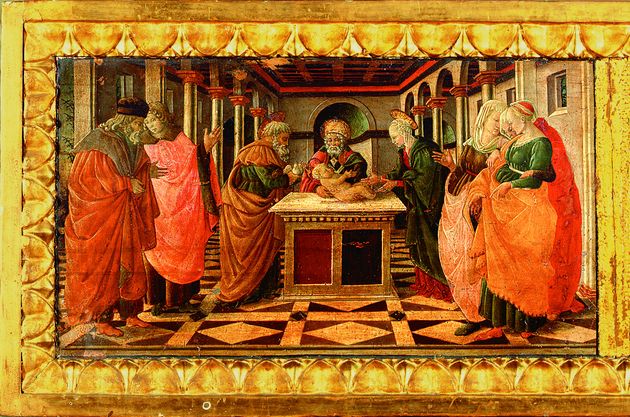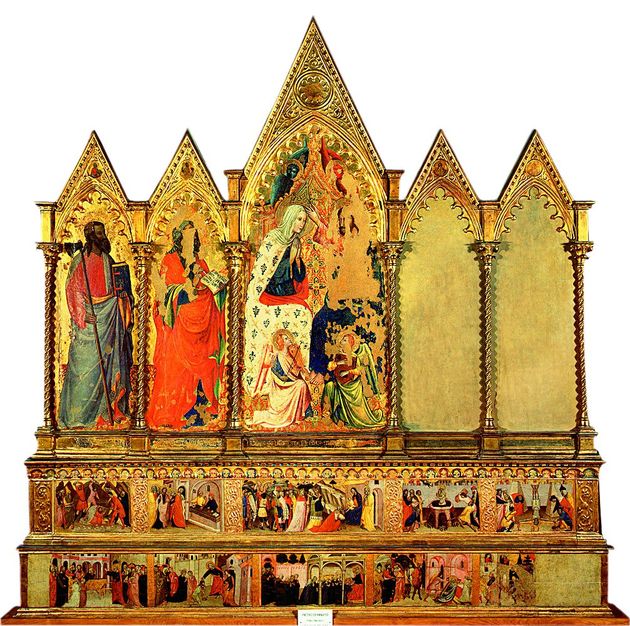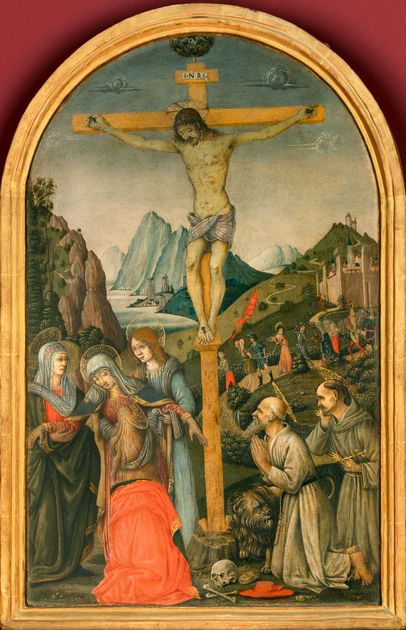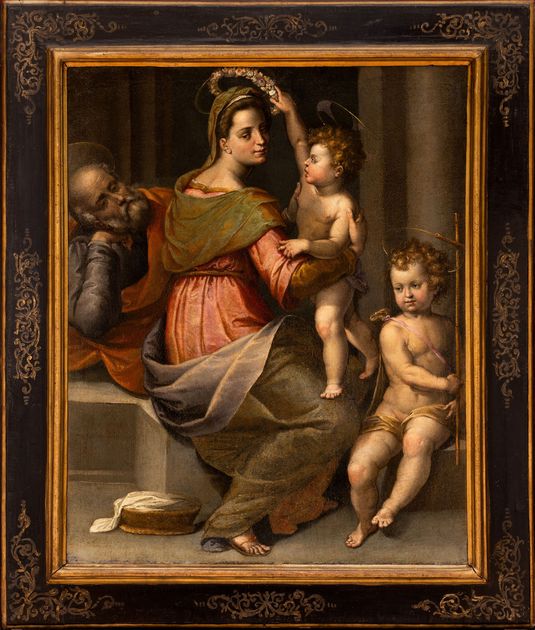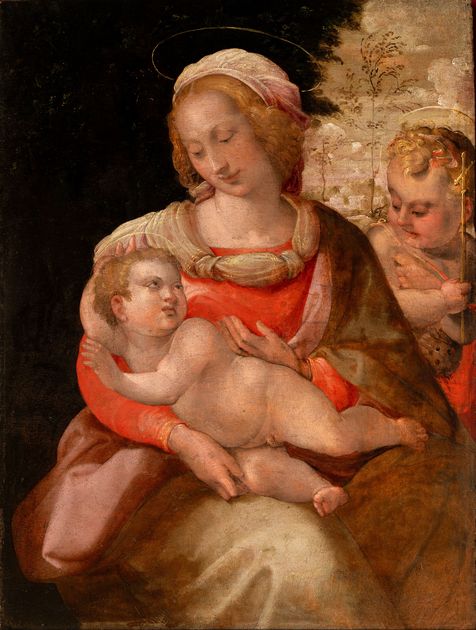The theme of the adoration of the Child, partly based on the vision of St. Bridget, was proposed various times by Lippi in similar forms. Here however the artist creates a compact composition, the group being wholly gathered in the foreground and standing out from the barren, uniform landscape with the jutting rocks on which the announcement to the shepherds is taking place. The figures of the saints George, Mary, Joseph and Vincent Ferrer form a kind of inverted pyramid with the Child at the top, the centre of the composition.
The intervention of the workshop in the angels and St. George (rather stiffly rendered) does not detract from the effectiveness of the composition, which shows the master’s high skill in the animated St. Vincent Ferrer (canonised in 1455), the spellbound St. Joseph, and the delicate profile of the Virgin Mary, probably inspired by the beloved nun Lucrezia Buti, as the similarities of this figure with the St. Margaret in the Madonna of the Belt altarpiece (on display in this same room) would suggest.
Giorgio Vasari, the most famous 16th century biographer, saw the painting with the Nativity in the church of San Domenico, for which it had probably been commissioned. Right there the panel was damaged by a fire in the church in 1647; it was then stolen by the Napoleonic troops in 1810 and given back 7 years later. Finally, it passed to the Municipality in 1867.










